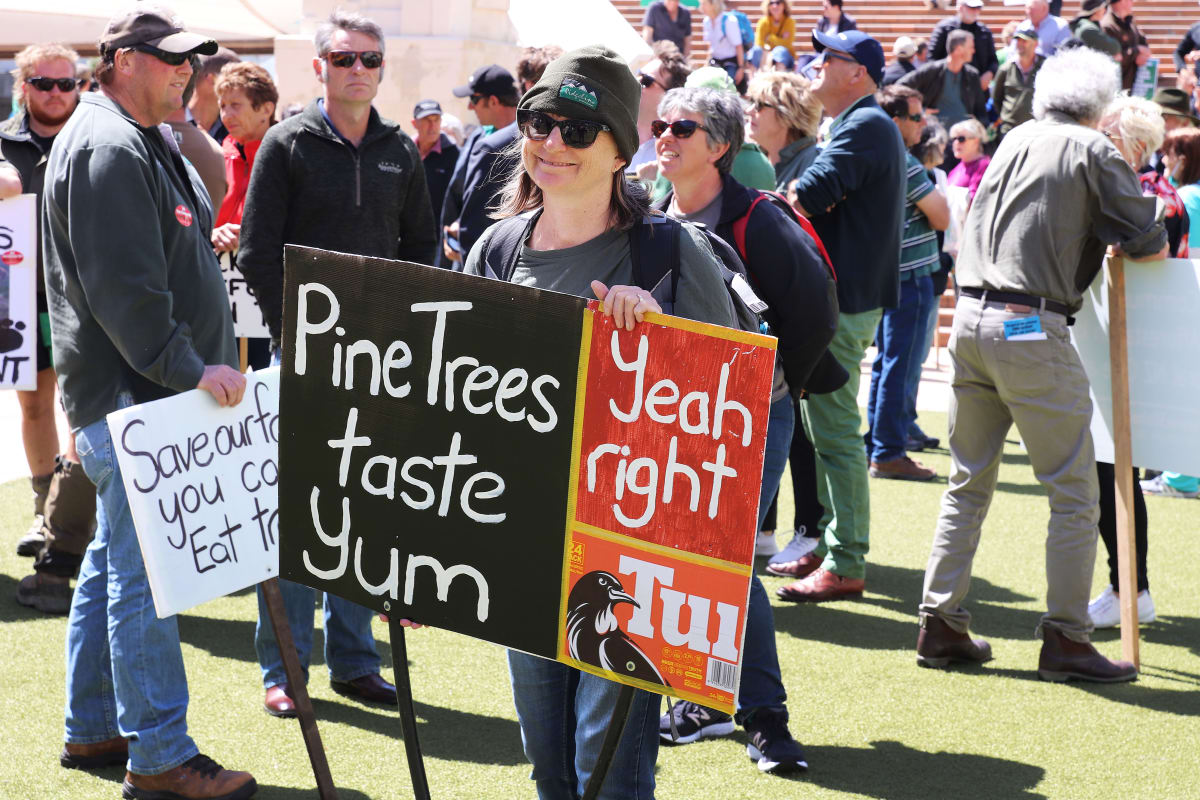
The Government expects to meet up to two thirds of its Paris target with offshore emissions reductions. Now it has to figure out how to accomplish that, Marc Daalder reports.
Analysis: Newly-released Cabinet documents reveal the challenge the Government has set for itself if it wants to meet its Paris climate pledge.
More than a dozen briefings concerning the updated emissions reduction target were quietly dumped on the Ministry for the Environment website on Christmas Eve. They reveal the Government will have to pull on all the levers available to it if it wants to meet its commitment to reduce emissions over the next decade by 41 percent from 2005 levels.
That includes a renewed focus on reducing emissions at home, a rush to hash out deals to pay for emissions reductions in developing countries in the Asia-Pacific region and exploration of hooking up New Zealand's Emissions Trading Scheme (ETS) with overseas carbon markets, like the European Union's ETS or a global trading system that could be set up under the Paris Agreement.
More than two-thirds of the reductions over the next decade are likely to come from offshore and then be attributed to New Zealand's record.
The offshore gap
Ahead of the COP26 climate summit in November, Climate Change Minister James Shaw announced a major upgrade to the Government's Nationally Determined Contribution (NDC) under the Paris Agreement. The new target is a step up in ambition from the one announced by John Key in 2015. While that pledge would have seen New Zealand's emissions in 2030 rise, when compared to the base year of 2005, the new one would have them 20 to 30 percent lower by that date, once various accounting tricks are pulled aside.
The papers also show Shaw pushed for a more ambitious target of a 45 percent reduction, but Cabinet settled on 41 percent instead. Newsroom reported from leaked documents last year that Shaw hoped for greater cuts and a pledge to reach net zero greenhouse gas emissions in 2050 as part of the NDC. New Zealand's current domestic target for net zero emissions in 2050 excludes methane from agriculture and the waste sector.
Even though Shaw failed to get the Government to commit to steeper cuts, the briefings lay out the scale of the challenge that now faces the Government.
Under current policy settings, emissions over the next decade are expected to total 720 million tonnes of carbon dioxide equivalent (Mt CO2e). With the new NDC, the Government wants to emit only 571 million tonnes, leaving a gap of 149 million tonnes.
The Climate Change Commission wants to see New Zealand reduce emissions domestically by at least 47 MT CO2e over the same period of time. If new technologies come along faster than expected or are cheaper than anticipated, domestic action could account for up to 74 Mt by 2030 in the commission's "tailwinds" scenario.
That still leaves between one half and two thirds of the reduction to offshore action - between 75 and 102 Mt CO2e, according to the Cabinet paper. The cost of purchasing those emissions reductions overseas could range from $5.8 to $13.8 billion.
This couldn't be spent all at once, either. The rulebook that has been built up around the Paris Agreement will require New Zealand to make and report yearly progress towards our NDC, through both domestic and offshore mitigation.
The Government's plan
Early briefings from June and July of last year show the Government originally intended to source the bulk of its offshore reductions through purchasing carbon offsets from overseas carbon markets.
These purchases would be linked up to New Zealand's ETS, so some of the credits auctioned by the Government here were backed by a real reduction in emissions overseas.
"The most feasible option to deliver offshore mitigation with high environmental integrity at the scale New Zealand requires for the current NDC1 is ETS linking," officials wrote in a briefing on "fiscal, economic and feasibility considerations" in June.
"There are other options for accessing international mitigation, but these are emerging and uncertain."
Even ETS linking had a catch, however. Because the number of units auctioned each year is capped in order to cap emissions, only a certain number of international credits could be moved through the ETS.
"Increasing the ambition of the NDC increases the portion of units within the NZ ETS that would have to be purchased internationally or backed by international units," officials wrote.
"Increasingly ambitious NDC targets carry the risk of not being able to use the NZ ETS to purchase or on-sell the required international units. This threshold is reached with a target of around 40 percent," they reported in a separate briefing the next month.
Cabinet asked the officials to come back with more options for offshore mitigation which didn't rely on ETS linking. Most of the alternatives they returned with are redacted in the July briefing.
By the time Cabinet finally signed off on the NDC, the strategy had shifted considerably. Shaw now says ETS linking is no longer expected to provide most of our offshore mitigation.
"As I said when we announced the updated NDC, Cabinet has agreed that in meeting our climate change targets – both international and domestic – New Zealand’s first priority will be investment in our domestic decarbonisation," he told Newsroom.
"However, based on the Climate Change Commission’s analysis and recommendations, we know that it is highly likely that we will also need to work with other countries to reduce global emissions in line with our updated NDC. Assuming we have to take that option, Cabinet has prioritised working bilaterally and plurilaterally with developing countries in our Asia-Pacific neighbourhood, on projects that support their sustainable development goals and climate resilience."

When he announced the NDC, Shaw conceded this could well end up as a scheme where New Zealand pays poorer countries to plant trees. While there's plenty of suitable land for carbon forestry in New Zealand, the issue has become a hot button topic in rural areas as more and more farmland is swallowed up by exotic pine. Planting trees in Indonesia or Papua New Guinea avoids the negative political repercussions and could end up being cheaper.
Officials are still "exploring a range of other options, including international ETS linking," he added.
Can it be done?
Meeting the NDC will be a massive task, regardless of which source of offshore mitigation is used.
"A purchase of 50-100Mt (depending on how optimistic you are about further domestic reductions) over the next 10 years, at a ballpark $100/tonne, is a $0.5-1B annual effort. It is utterly essential that this is managed well," climate policy consultant Christina Hood wrote last year.
"In most countries with international carbon market purchase programmes, a separate agency was established and resourced to deliver the necessary reductions. In my view New Zealand needs to do this as well."
Hood said it was something that needed to be sorted now, not in 2030. The Paris rulebook requires annual updates and potential partners would also want a stable annual programme, not big one-off purchases.
Such a strategy would also ensure New Zealand is actually on track to meet its NDC, something Oxfam NZ's campaigns lead Alex Johnston worries about.
"When we're looking to find mitigation at that scale and at that level of cost, the scale at which New Zealand's looking to do it is pretty big and the availability of those kinds of agreement will be fairly limited. We're not going to have heaps of choice, necessarily, if we want to find 100 megatonnes, to be picky about the sustainable development principles or the human rights principles of certain mitigation projects," he told Newsroom.
"There's going to be this tension between one side of Government that wants to find the lowest cost mitigation offshore and the other side that wants to protect human rights and environmental integrity and all those sorts of things that are vital in this situation. But because we're going in and we've hedged two thirds of our NDC on this and we've not left a lot of time to figure out how to find that mitigation, we have real concerns that there's going to be some compromises made along the way."
Shaw said he was committed to ensuring offshore mitigation met a high bar of environmental integrity. While the NDC Cabinet paper references the possibility of investing in REDD+ forestry projects, he said that was unlikely to happen. REDD+, another briefing noted, "is a contentious issue due to challenges around environmental integrity".
"Government is committed to high standards of environmental integrity for offshore mitigation. Given the documented issues with REDD+ it seems highly unlikely that there would be projects that we could support that would meet our standards of environmental integrity," Shaw told Newsroom.
Shifts in the climate space since the NDC decision was made could also put greater emphasis on reducing emissions domestically. When ETS linking was mooted back in June, the European Union ETS price was NZ$87.50 a tonne. Now it has nearly doubled to NZ$160 a tonne, making a wide range of domestic decarbonisation opportunities more cost effective than investing offshore.
If bilateral and multilateral mitigation options in the Asia-Pacific region dry up - which Johnston thinks is likely to happen - then the Government could have to choose between costly investments in reducing emissions at home or even costlier investments in reducing emissions for other developed countries overseas.







